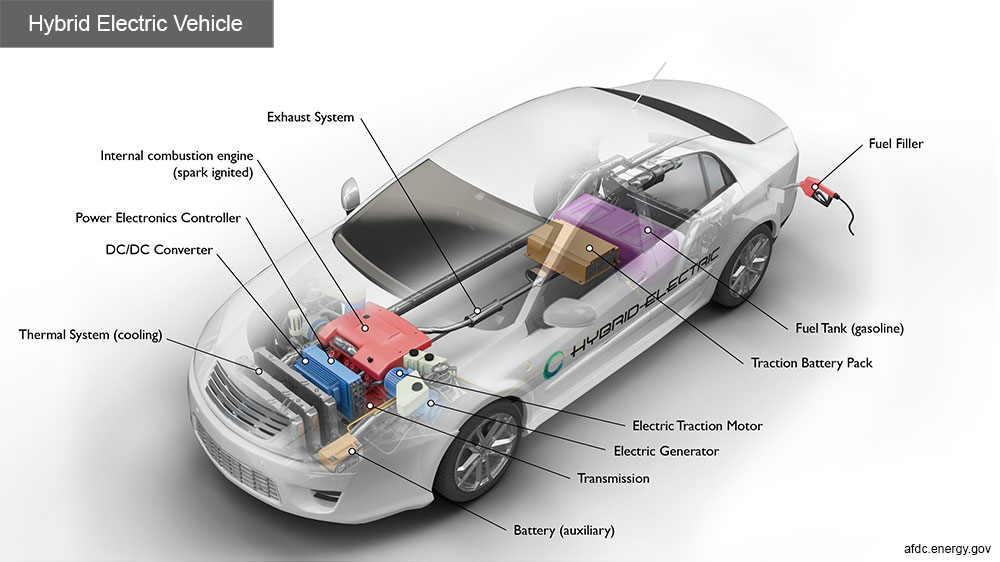The term ´hybrid´ is more fashionable than ever, and many manufacturers begin to use the term as if it were a panacea. But … what exactly is a hybrid car, how many types are there, what advantages does the hybrid technology bring and when should you get one?
What is a hybrid car?
All vehicles have a means of storing energy – a fuel tank – and a machine that is capable of transforming that energy into motion to propel the car.
For example, in a ‘gasoline’ vehicle, the energy is stored in the form of a fuel that, when burned, releases energy. That energy is transformed into motion in the combustion engine. Or for example, in the case of an electric car, the energy is stored in a battery and converted into mechanical movement by an electric motor.
Well … a hybrid car is one that has two or more energy stores and two or more machines designed to transform that energy into motion.
What types of hybrids does it make sense to build?
Technically, and according to the definition above, a car with two gasoline engines would be a hybrid. However, it is unlikely that we will see such hybrids. The reason for the existence of hybrids is that two very different types of propellers can complement each other to give rise to a propulsion system with more advantages and less disadvantages.
We could make a gasoline-diesel hybrid, or gasoline-gasoline but it wouldn’t make much sense. We intend for the two thrusters to complement each other so that the resulting power plant offers the advantages of both. Therefore, all hybrids on the market are gasoline-electric, with a small portion represented by diesel-electric.
Although all the factors are good justifications, the most important of all is efficiency. Electric motors are very efficient in situations where an internal combustion engine is terribly inefficient. And they are for two reasons. The first is that a heat engine wastes more than 60% of the energy contained in the fuel in the form of heat, while the efficiency of an electric one is around 96%. The second is that both the gasoline and diesel engines are ´unidirectional´. That means that the energy flows in one direction: the fuel burns, that energy moves the car and … bye! That energy never returns.
An electric motor is ‘bi-directional’: it can both convert electrical energy into motion to propel the car … and recover that movement – the inertia of the vehicle – during braking, converting it into electrical energy that is stored again in the batteries.
Most of the reduction in consumption achieved by a hybrid propeller is based on this energy recovery during braking. The rest is achieved by preventing the heat engine from working in those situations in which it consumes a lot of fuel – that is, in which its efficiency is very poor – such as, for example, when starting off or when driving while accelerating very little.
Advantages and disadvantages of a hybrid
Advantages
– Greater efficiency, because the thermal engine works for a longer amount of time in the regime in which it takes better advantage of the fuel.
– Lower consumption, because during braking or, for example, when driving downhill, the electric motor recovers part of the inertia of the car to recharge the batteries.
– Having extra power at specific times, even if it is not a very efficient use.
Disadvantages
– Greater weight, since it has to have two “energy tanks” and two propellers.
– Higher initial cost, by increasing the complexity of the propulsion system.
– Lower reliability -a priori-, as it is a more complicated propulsion system.
– The ability to reduce consumption depends on the type of driving. In traffic jams and at low speed, with continuous stops, a hybrid will be more efficient than a conventional motor equivalent. However, at constant speed on the highway, a hybrid will be less efficient, because the fact that we cannot recover energy during braking has to add the fact that we must carry the full weight of the hybrid system.



